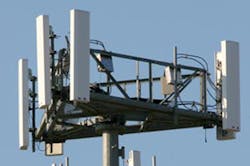Millimeter-Wave Off-Body Textile Antenna Arrays Find On-Body Opportunities
This file type includes high resolution graphics and schematics when applicable.
Wearable antennas for body-centric communications have been attracting increased interest, owing to their potential benefits for firefighters, police, soldiers, and even medical applications. Off-body antennas have the capability of working with on-body communication systems and taking the leap to sharing that information with other networks. At the University of Rennes in Rennes France, James D. Krieger, Chen-Pang Yeang, and Gregory W. Wornell have explored techniques to solve the challenges of fabricating mm-wave antenna arrays on commercially available textiles.
The first challenge in developing a reliable fabrication process for textile antennas is finding fabric capable of supporting the tight electrical and mechanical requirements of mm-wave technologies. With the combined use of ShieldIt Super (a nickel- and copper-plated rip-stop nylon) as a ground planen, and laser-machined copper foils for feed lines and radiating elements, the right amount of performance and flexibility can be achieved.
The performance properties of common textiles (e.g., cotton from T-shirts) were analyzed for substrate properties with an insertion loss of 1.6 dB/cm at 60 GHz, a relative permittivity of 2.0, and a loss tangent of 0.02. A single-layer microstrip-fed four-patch antenna array was chosen for the design; it exhibited less than 10-dB reflection loss in the 57-to-60-GHz range for all prototypes. The consistency and quality of the performance could be due to the accurate and repeatable process of using laser-machined copper foils and the radiating medium.
A mm-wave semi-solid phantom was used to mimic the properties of the human body, with numerical and experimental results showing minimal loss due to the flexible ground plane backing of the device. Though the radiation patterns of the antenna array are affected significantly under several bending and crumpling conditions, the overall reflection coefficient, radiation pattern, and gain performance remain adequate. See “60-GHz Textile Antenna Array for Body-Centric Communications,” IEEE Transaction on Antennas and Propagation, April 2013, p.1816.
This file type includes high resolution graphics and schematics when applicable.
About the Author
Jean-Jacques DeLisle
Jean-Jacques graduated from the Rochester Institute of Technology, where he completed his Master of Science in Electrical Engineering. In his studies, Jean-Jacques focused on Control Systems Design, Mixed-Signal IC Design, and RF Design. His research focus was in smart-sensor platform design for RF connector applications for the telecommunications industry. During his research, Jean-Jacques developed a passion for the field of RF/microwaves and expanded his knowledge by doing R&D for the telecommunications industry.

